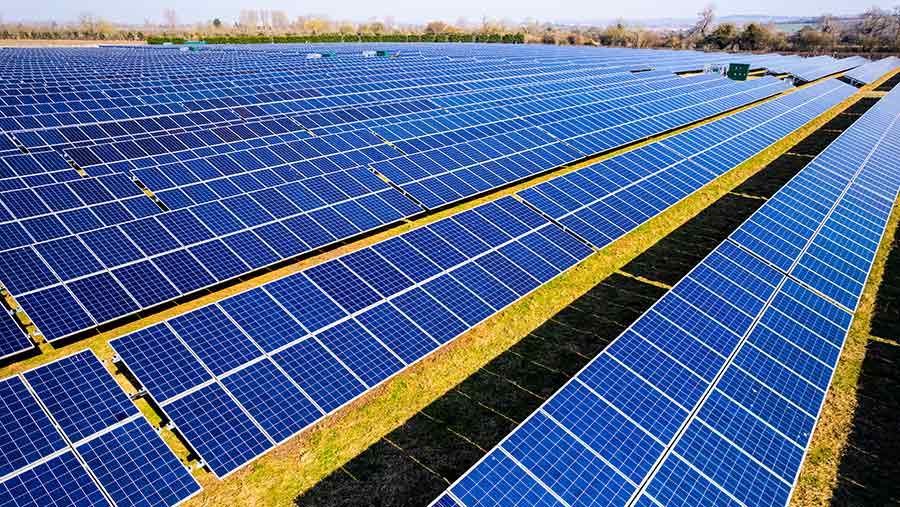UK’s largest solar farm sparks contrasting views
 © Lightning Strike Pro/Adobe Stock
© Lightning Strike Pro/Adobe Stock Plans have been unveiled for the UK’s largest solar farm covering almost 1,000ha of countryside in Oxfordshire.
The 971ha (2,400-acre) Botley West Solar Farm would generate 840mW of energy – enough to power all of Oxfordshire’s 330,000 homes.
Panels would be spread across three sites covering large tracts of agricultural land at Woodstock, Kidlington and west of Oxford.
See also: Opinion: Solar has a role in optimising land use policy
The German company behind the plans, Photovolt Development Partners (PVDP), has opened a public consultation window until 15 December.
Because the proposed output far exceeds a government trigger point of 50mW, the development will be classified as a nationally significant infrastructure project (NSIP).
That means it must also obtain approval from government ministers before any green light can be granted.
If all the potential planning hurdles, approvals and any public opposition can be overcome, PVDP said it expected construction to begin in 2025.
Environmental gains
In a statement, PVDP said the venture presented a rare and fantastic opportunity to bring about significant environmental gains, while mitigations would promote wildlife and biodiversity.
The company invited feedback from communities across the site areas and stressed it was committed to undertaking a transparent and rigorous consultation process.
It added that it would hold open events to address public concerns and was working with supportive landowners.
One of those landowners is the Blenheim Estate, which has welcomed the development.
Blenheim Palace chief executive officer Dominic Hare said: “The climate emergency must be a focus for us all today.
“As a landed estate, we are uniquely positioned to take positive action in protecting future generations.
“We believe this proposal for solar energy production will help to safeguard this area, and support global efforts to reduce carbon emissions and our reliance on fossil fuels.”
According to The Daily Telegraph newspaper, tenant farmers on the estate would lose the farming rights to the land. But Blenheim Estate officials said the farmers involved were accepting of the plans.
Less positive
However, other organisations have been less positive. Countryside campaign group CPRE said that it would wait to see the details in the plans, but voiced concern over the scale of the project.
A CPRE spokeswoman said: “We are very concerned about the large number of solar farms coming forward in Oxfordshire that are eating into our food-producing agricultural land and, in some cases, having a pretty devastating effect on the landscape.”
A recently formed group, the Solar Campaign Alliance (SCA), has also raised concerns about food production losses. In a recent letter to the prime minister, the group said that a government aspiration for a five-fold increase in large-scale solar by 2035 would eat up 141,000ha of farmland.
This is equivalent to about 1,250 ordinary-sized family farms, it suggested.
The SCA urged the government to adopt a policy that promoted both solar energy and agricultural produce.
“This can be achieved without difficulty if solar panels are located on low-grade land, brownfield sites or rooftops,” the letter stated.
“You get the same amount of solar energy whether panels are sited on best and most versatile land or low-grade land, but low-grade land can only produce low agricultural yields,” the SCA pointed out.
More information about the proposals and consultation events can be found on the project website.
